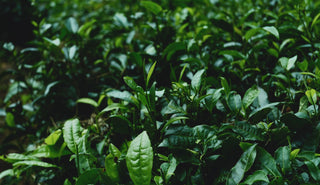Have you ever wondered how a simple tea leaf became the cherished favorite of ancient Chinese emperors? What magic allows Pu’er tea to grow richer and more aromatic with time, while most teas lose their flavor after just a few years?
Pu’er tea is more than just a beverage; it’s a witness to time and a carrier of culture. From Yunnan’s verdant mountains, it journeyed across the legendary Tea Horse Road to grace the tables of emperors and capture the hearts of tea lovers worldwide.
As a child, I loved listening to my family’s stories about Pu’er tea. I often imagined caravans loaded with tea cakes crossing rugged mountain trails. Even today, every cup of Pu’er tea connects me to its history and cultural legacy.
What Makes Pu’er Tea Unique?
Pu’er tea is crafted from Yunnan’s large-leaf tea trees and stands out for its fermentation process, which enhances its flavor over time. It comes in two main types:
- Raw Pu’er (Sheng Cha): Naturally aged, raw Pu’er starts with a bold, astringent taste that mellows into a smooth, sweet brew over the years.
- Ripe Pu’er (Shou Cha): Made through an accelerated fermentation process, ripe Pu’er offers a rich, earthy flavor perfect for immediate enjoyment.
My grandmother used to brew both types and let me taste them side by side. She would say, “Raw tea needs time to grow, while ripe tea is warmth you can enjoy now.” These moments sparked my lifelong curiosity about the magical transformation of tea.
The Story of Pu’er Tea: From Past to Present
Origins on the Tea Horse Road
The history of Pu’er tea stretches back more than 2,000 years, with Yunnan recognized as the birthplace of tea. During the Tang and Song dynasties, Pu’er tea began its legendary journey along the Tea Horse Road, a trade route connecting Yunnan with Tibet. Along this route, tea cakes were exchanged for sturdy Tibetan horses. While Tibet relied on tea and food supplies, Yunnan needed horses for transportation and defense.
My grandfather often shared tales of the Tea Horse Road. He would describe the arduous journeys of the caravans and how the tea cakes, exposed to the humidity and time during transport, underwent natural fermentation that enhanced their flavor. “Remember, Yu,” he would say, “each Pu’er tea cake has its own unique story and journey, just like us.”
Imperial Palaces and Modern Revival
By the Qing dynasty, Pu’er tea had reached its peak, earning its place as a "tribute tea" for the imperial court. Emperor Qianlong was famously fond of Pu’er tea and reportedly drank it daily to aid digestion and protect his health. In the palace, Pu’er tea was not only a prized beverage but also a symbol of prestige and diplomacy, often gifted to dignitaries to strengthen ties.
Interestingly, Pu’er tea’s fame extended far beyond China. By the 19th century, it had become an "Oriental treasure" in Britain, beloved by the aristocracy for its distinct flavor and cultural allure.
In the 20th century, Pu’er tea experienced a revival. Aged tea cakes, some decades old, became prized collectibles, valued for their deep flavors and symbolic connection to tradition. For me, Pu’er tea brings me home—back to my family, back to the mountains of Yunnan.
Pu’er Tea: A Taste of History and Culture
Pu’er tea is not just tea—it is a condensed history, a cultural emblem, and a natural gift from Yunnan’s mountains. From its imperial legacy to its journey along the Tea Horse Road, and from its cultural symbolism to its modern revival, Pu’er tea embodies the wisdom of generations and the beauty of patience.
For me, every cup of Pu’er tea brings back memories of my homeland and the warmth of family. This tea is not just my source of strength—it is my connection to my roots. I hope this story inspires you to discover the unique charm and rich culture of Pu’er tea. With every sip, may you taste history, culture, and tranquility.
- Yu

